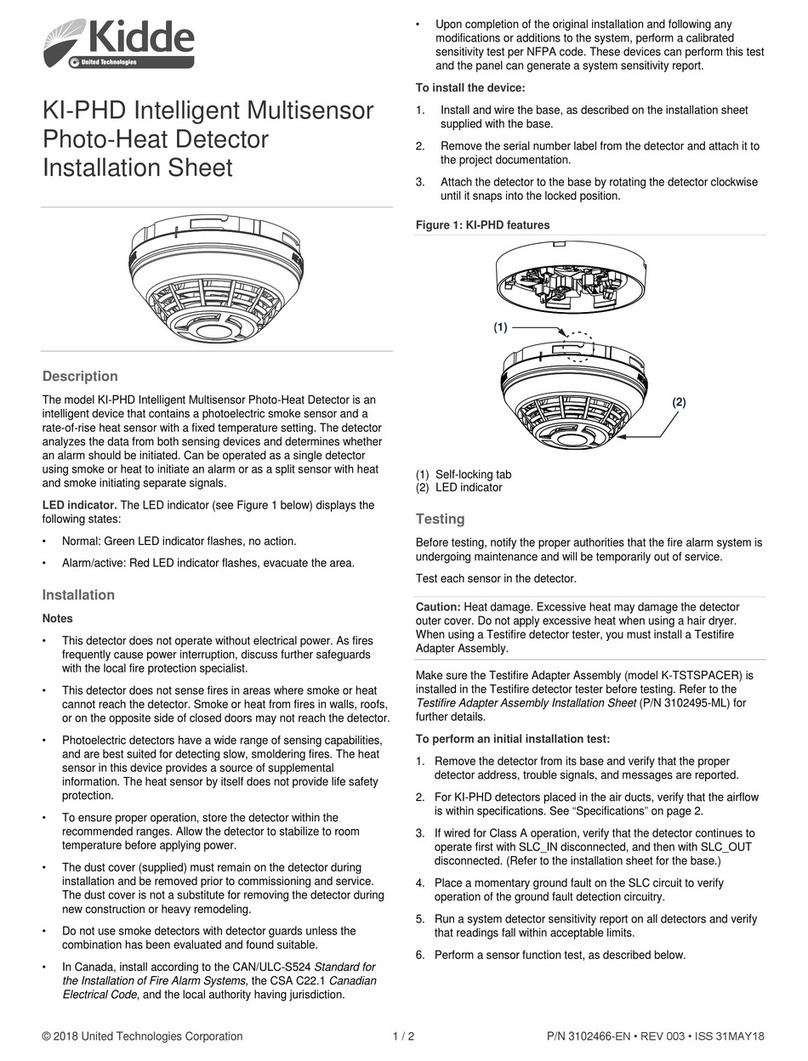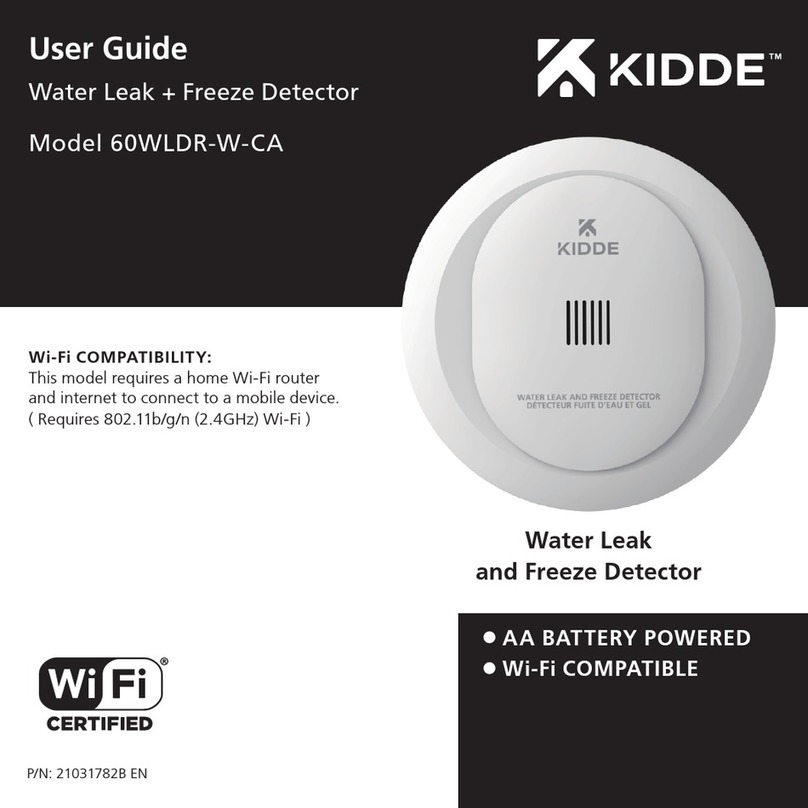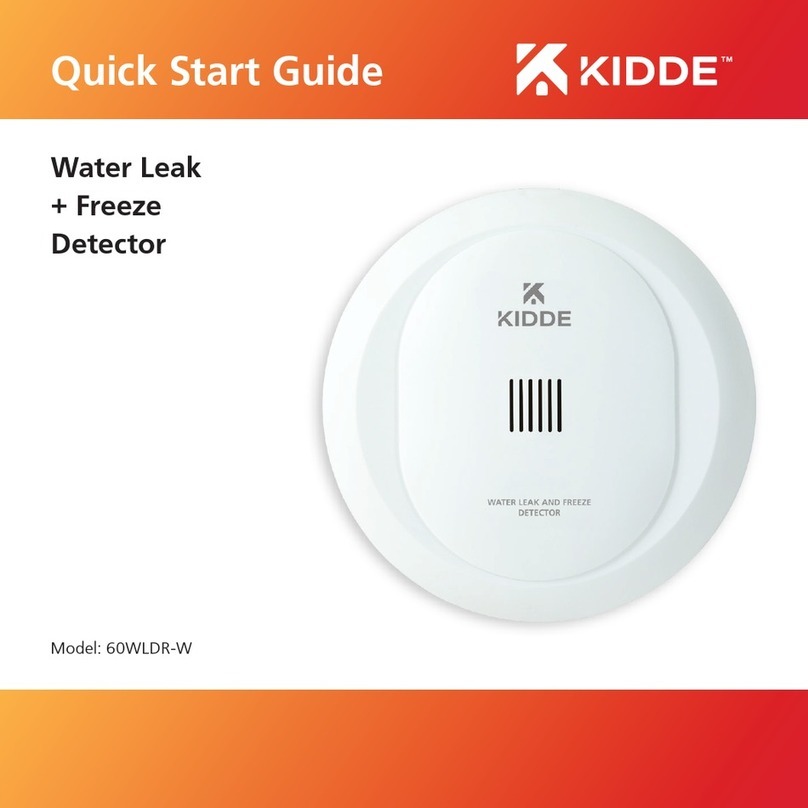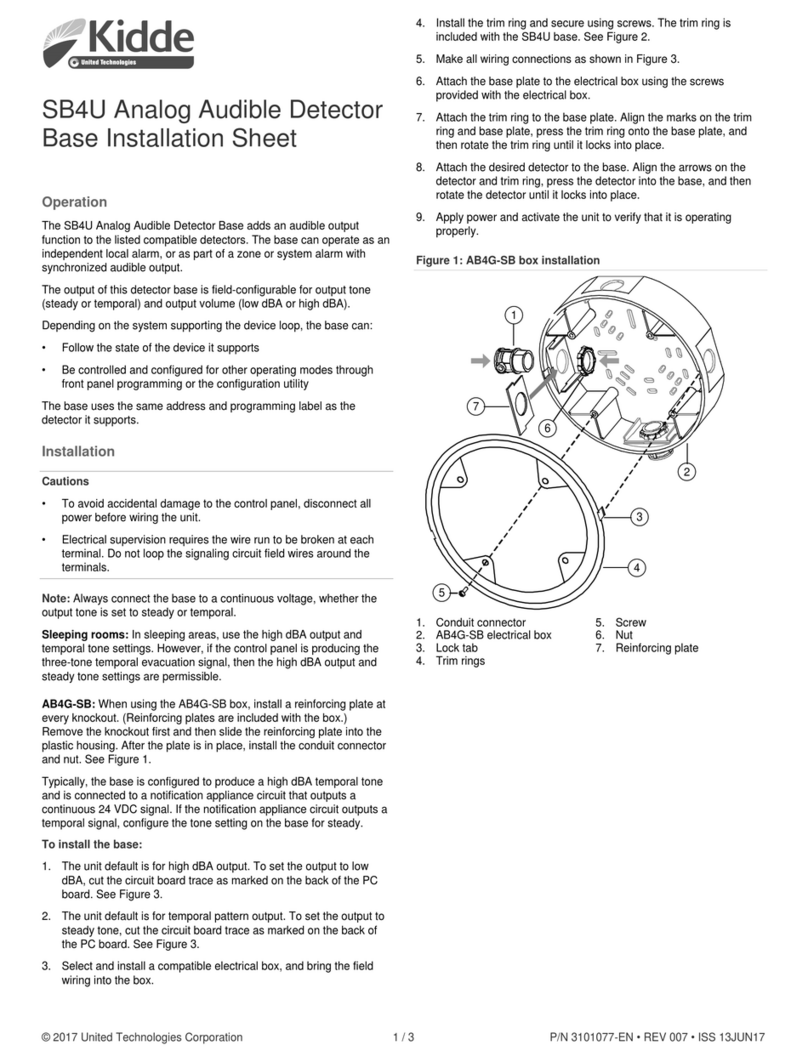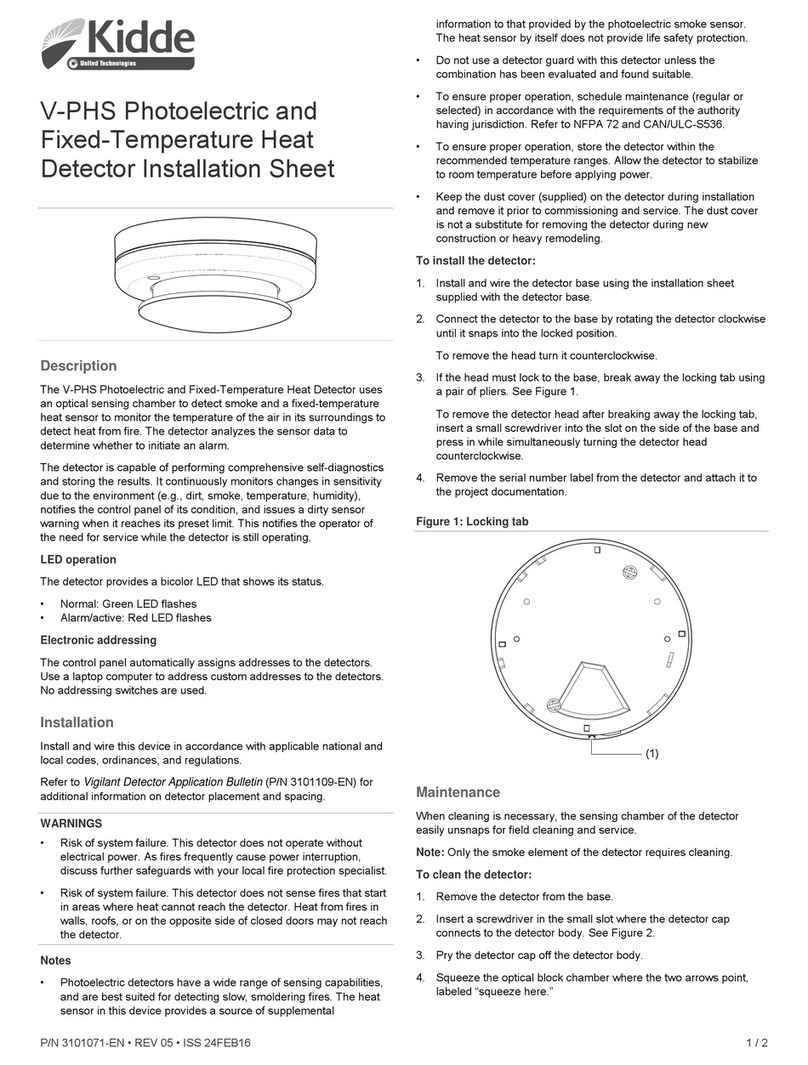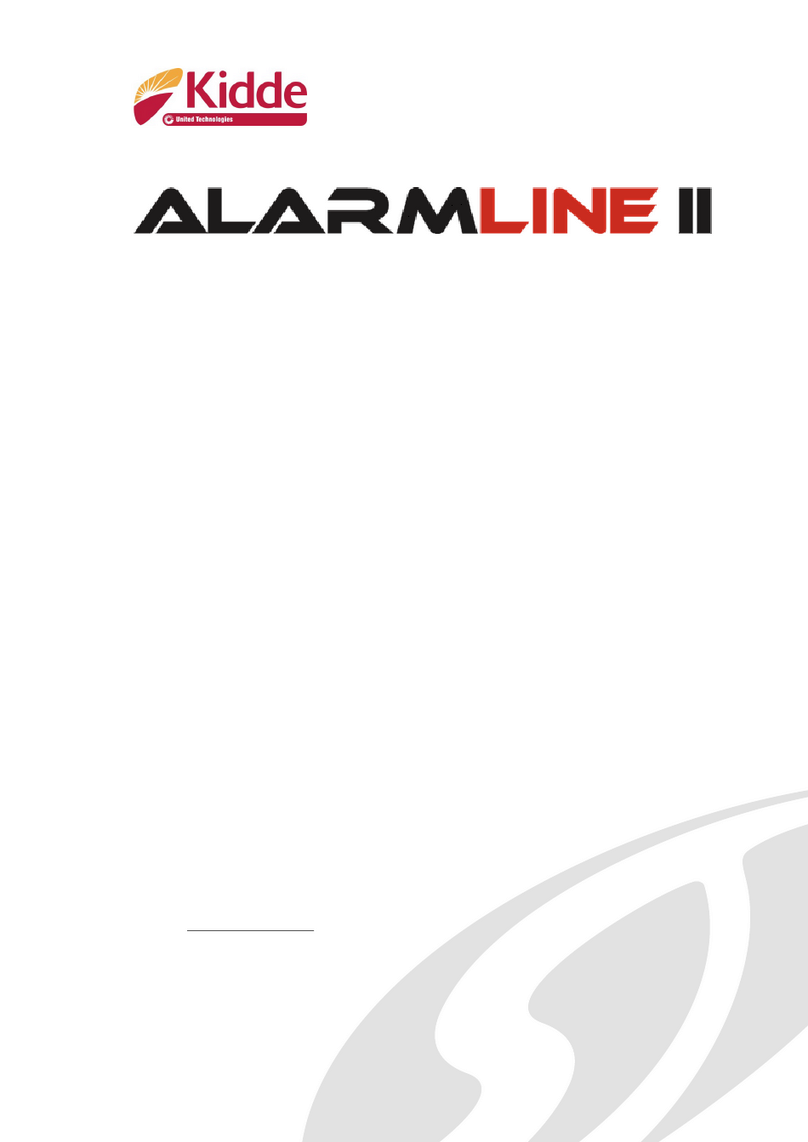
Australia & New Zealand
Phone: 1800 672 171
Outside Australia: +61 3 9518 5588
Email:cs@resecurityproducts.zendesk.com
Web: www.kidde.com.au
Head Oce
10 Ferntree Place
Notting Hill, Victoria 3168
Australia
©2021Carrier.Allrightsreserved.
KiddeAustraliaisaCarriercompany.
DC-9103E-KID
Page 3 of 2 DATA SHEET
Issue 1.0
Specifications
Operating Voltage 24VDC(16VDC~28VDC)
Standby Current ≤60μA
Alarm Current ≤55mA
Fire LED Red, periodically flash once in polling when the status is
set to “ON”; no illumination when the status is set to “OFF”.
Periodically flash twice in fault; steady illumination when in
alarm.
Remote Indication Output Polarity-sensitive, directly connecting with remote indicator
(built in 10k resistor in series, maximum output current is
2.0mA);
The remote indicator does not
illuminate in normal and flashes in
alarm.
2V (peak to peak value)
Class and Setup Classes A1R, A2S, BS programmable.
Maximum Ripple Voltage 2V ( peak-to-peak)
Alarm Reset Instantaneous cut-out (10s Min, 1.0VDCMax.)
Wiring Polarized two wire
Ingress Protection Rating IP2X
Ambient Temperature Class A1: -10ºC~+50ºC
Class A2: -10ºC~+50ºC
Class B: -10ºC~+65ºC
Typical Fixed Temperature Class A1: 58ºC
Class A2: 62ºC
Class B: 77ºC
Relative Humidity ≤95%, non-condensing
Material ABS
Dimensions Diameter: 100mm Height: 53.3mm (with base)
Mounting Hole Spacing 45mm~75mm
Weight About 110g (with base)
Ordering information
Part number Description Ship Wt., lb (kg)
DC-9103E-KID Conventional Rate of Rise and Fixed Temperature Heat
Detector
Accessories and Tools
Module Name Remarks
P-9910B Handheld Programmer Order separately
DB-01 Base Order separately
Before performing maintenance ensure the proper authorities are notified that the
system is undergoing maintenance and will temporarily be out of service. Disable the
zone or system undergoing maintenance to avoid any unwanted alarms.
Prior to commissioning ensure the dust covers are left on the detectors and measures
are taken to keep the detectors free from dust, dampness and corrosion.
Detectors should be cleaned at least once a year to ensure normal operation of the
system.
The detector should be tested after any cleaning or when replaced
Protect the metal component on the PCB against damp and improper distortion.
Maintenance







